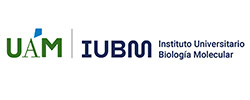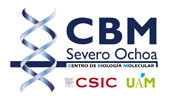Cytoskeleton-plasma membrane interactions
Prof. Isabel Correas Hornero. Catedrática. Departamento de Biología Molecular. UAM.
Our aims during this period have been: 1) to study the mechanism of biogenesis of the primary cilium in polarized epithelial cells, 2) to investigate the regulation of the formin INF2, and 3) to characterize a novel member of the MAL family of proteins.
Previous work in our laboratory established a critical role for the midbody remnant in primary cilium formation in polarized epithelial cells. We have now observed that the majority of midbody remnants are physically connected to the plasma membrane through a membranous stalk derived from an intact arm of the cytokinetic bridge. Thanks to this physical continuity, the midbody remnant delivers a specialized membrane patch that the centrosome uses to build the ciliary membrane. Our study shows how the ciliary membrane and the primary cilium originate in polarized epithelial cells.
Formins are a family of proteins involved in the assembly of actin filaments. Most formins, such as mDia1, contain a diaphanous inhibitory domain (DID) at the N-terminal region that interacts with the C-terminal region to maintain the molecule in an inactive state. mDia1 and other formins are regulated by the binding of Rho GTPases to the DID. INF2 is a formin linked to inherited renal and neurological disease in humans. INF2 possesses an N-terminal extension of unknown structure and function that precedes the DID. Our work has demonstrated that this extension is organized into two a-helices, the first of which interacts directly with Ca2+/calmodulin through a peptide motif that is conserved in vertebrates. Consistent with this interaction, INF2 produces massive actin polymerization in response to increased Ca2+ levels. Our study reveals that, unlike other formins, INF2 is regulated by interaction of Ca2+/calmodulin with the INF2 N-terminal extension.
The MAL family of proteins has been the focus of our laboratory’s research for a long time. Our third project has dealt with the characterization of MALL, a membrane tetraspanning member of this family. We have found endogenous MALL in membranes and, unexpectedly, in nuclear-membraneless structures, the PML bodies. Our study suggests that MALL can adopt a membrane-embedded or a water-soluble conformation depending on its physical environment —lipidic or aqueous— in the cell. During mitosis, overexpressed MALL aggregates at the cytokinetic bridge into large solid structures that produce cytokinesis failure and lead to


